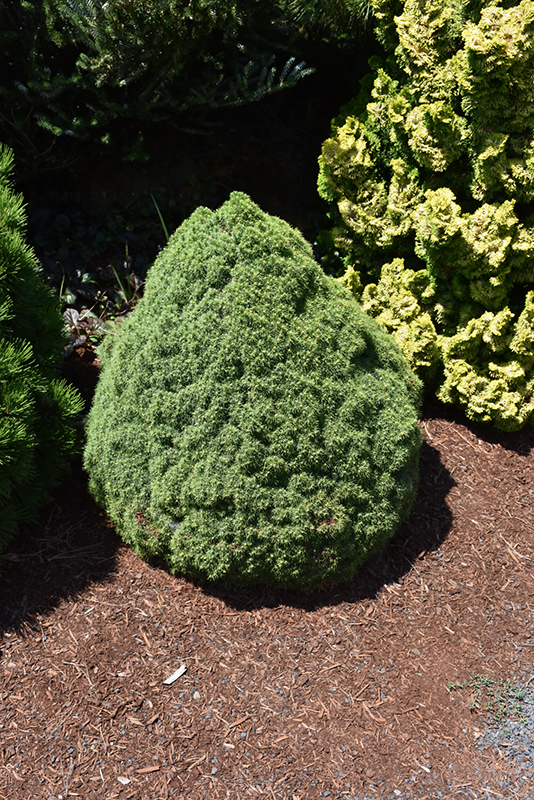>> Home
Humpty Dumpty Spruce
Picea glauca 'Humpty Dumpty'
Height: 3 feet
Spread: 3 feet
Sunlight:
![]()
![]()
Hardiness Zone: 3
Description:
Its habit explains its name; a very short, dense and plump cultivar that is kind of egg shaped; with nearly equal base width and height it forms a near perfect small pyramid; an excellent choice as a border or accent planting, very robust
Ornamental Features
Humpty Dumpty Spruce is a dwarf conifer which is primarily valued in the garden for its distinctively pyramidal habit of growth. It has rich green evergreen foliage which emerges light green in spring. The needles remain green throughout the winter.
Landscape Attributes
Humpty Dumpty Spruce is a dense multi-stemmed evergreen shrub with a distinctive and refined pyramidal form. Its relatively fine texture sets it apart from other landscape plants with less refined foliage.
This is a relatively low maintenance shrub. When pruning is necessary, it is recommended to only trim back the new growth of the current season, other than to remove any dieback. It has no significant negative characteristics.
Humpty Dumpty Spruce is recommended for the following landscape applications;
- Mass Planting
- Rock/Alpine Gardens
- General Garden Use
Planting & Growing
Humpty Dumpty Spruce will grow to be about 3 feet tall at maturity, with a spread of 3 feet. It tends to fill out right to the ground and therefore doesn't necessarily require facer plants in front. It grows at a slow rate, and under ideal conditions can be expected to live for 50 years or more.
This shrub does best in full sun to partial shade. It prefers to grow in average to moist conditions, and shouldn't be allowed to dry out. It may require supplemental watering during periods of drought or extended heat. It is not particular as to soil type or pH. It is somewhat tolerant of urban pollution, and will benefit from being planted in a relatively sheltered location. This is a selection of a native North American species.
